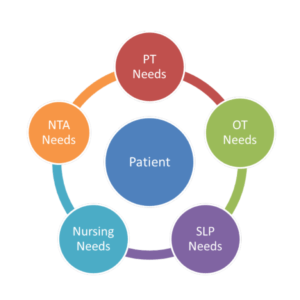MedPAC’s site-neutral payment recommendation draws criticism
Don’t count the Coalition to Preserve Rehabilitation (CPR) or the American Medical Rehabilitation Providers Association (AMRPA) among the fans of the Medicare Payment Advisory Commission (MedPAC) recommendation of “site-neutral” payments for certain Medicare beneficiaries who need medical rehabilitation after an injury or illness. Other groups, however, have expressed support for the concept.
The policy, if approved by Congress, will inappropriately divert patients who need inpatient hospital rehabilitation to “less-intensive settings,” such as nursing homes, based on their diagnosis rather than on their individual clinical needs, CPR says.
“MedPAC’s site-neutral payment policy is based on a false premise,” Susan H. Connors, president and CEO of the Brain Injury Association of America and CPR member, said in a statement. “Inpatient rehabilitation hospitals and nursing homes are far from equivalent. They have different regulatory requirements, levels of care coordination and intensity, and [they] achieve different clinical outcomes.”
AMRPA Board Chair Bruce M. Gans, MD, agrees. The MedPAC recommendation “prioritizes short-term cost considerations over long-term patient outcomes,” he said in a statement. “The most comprehensive study to date shows that patients have better survival and outcomes when treated in rehabilitation hospitals and units rather than [in] nursing homes. In fact, not only do they live longer, but they go home sooner and have a better quality of life.”
LeadingAge, which represents nonprofit aging services providers, has said it would support site-neutral payments for skilled nursing facilities “if appropriate risk adjustment was applied to those payments at the patient level if such a payment methodology reflected the full complexity of medical needs, functional and support needs and the beneficiaries’ goals of care.”
The American Health Care Association (AHCA), also representing aging services providers, has said it supports a site-neutral payment system for post-acute care in which patients are grouped by clinical condition and severity of illness and in which the payment for patients within each group is the same regardless of treatment site. “Such a model has the potential to reduce Medicare spending by approximately $15 [billion to] $20 billion over a 10-year budget window. Meanwhile, this model encourages better care coordination and a more efficient post-acute care system, resulting in benefits to the patient through higher quality of care,” AHCA maintains.
Congress will decide whether to adopt MedPAC’s site-neutral payment recommendation.
Related content:
Nursing home care, rehab hospital care not equal, group maintains
'Site-neutral' payment proposal pits rehab hospitals against nursing homes
I Advance Senior Care is the industry-leading source for practical, in-depth, business-building, and resident care information for owners, executives, administrators, and directors of nursing at assisted living communities, skilled nursing facilities, post-acute facilities, and continuing care retirement communities. The I Advance Senior Care editorial team and industry experts provide market analysis, strategic direction, policy commentary, clinical best-practices, business management, and technology breakthroughs.
I Advance Senior Care is part of the Institute for the Advancement of Senior Care and published by Plain-English Health Care.
Related Articles
Topics: Medicare/Medicaid











